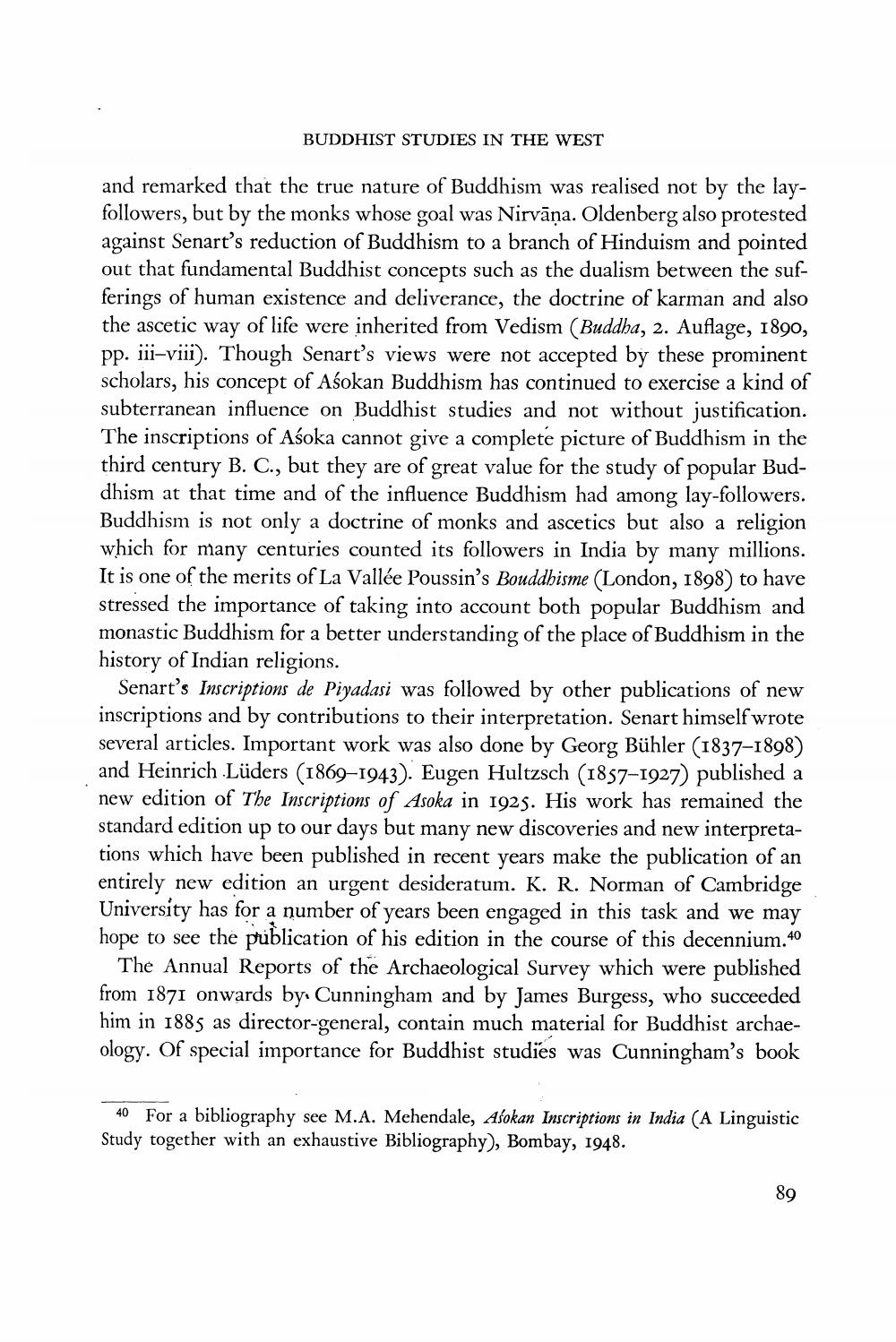________________
BUDDHIST STUDIES IN THE WEST
and remarked that the true nature of Buddhism was realised not by the layfollowers, but by the monks whose goal was Nirvāņa. Oldenberg also protested against Senart's reduction of Buddhism to a branch of Hinduism and pointed out that fundamental Buddhist concepts such as the dualism between the sufferings of human existence and deliverance, the doctrine of karman and also the ascetic way of life were inherited from Vedism (Buddha, 2. Auflage, 1890, pp. iii-viii). Though Senart's views were not accepted by these prominent scholars, his concept of Asokan Buddhism has continued to exercise a kind of subterranean influence on Buddhist studies and not without justification. The inscriptions of Asoka cannot give a complete picture of Buddhism in the third century B. C., but they are of great value for the study of popular Buddhism at that time and of the influence Buddhism had among lay-followers. Buddhism is not only a doctrine of monks and ascetics but also a which for many centuries counted its followers in India by many millions. It is one of the merits of La Vallée Poussin's Bouddhisme (London, 1898) to have stressed the importance of taking into account both popular Buddhism and monastic Buddhism for a better understanding of the place of Buddhism in the history of Indian religions.
Senart's Inscriptions de Piyadasi was followed by other publications of new inscriptions and by contributions to their interpretation. Senart himself wrote several articles. Important work was also done by Georg Bühler (1837–1898) and Heinrich Lüders (1869–1943). Eugen Hultzsch (1857–1927) published a new edition of The Inscriptions of Asoka in 1925. His work has remained the standard edition up to our days but many new discoveries and new interpretations which have been published in recent years make the publication of an entirely new edition an urgent desideratum. K. R. Norman of Cambridge University has for a number of years been engaged in this task and we may hope to see the publication of his edition in the course of this decennium.40
The Annual Reports of the Archaeological Survey which were published from 1871 onwards by. Cunningham and by James Burgess, who succeeded him in 1885 as director general, contain much material for Buddhist archaeology. Of special importance for Buddhist studies was Cunningham's book
40 For a bibliography see M.A. Mehendale, Asokan Inscriptions in India (A Linguistic Study together with an exhaustive Bibliography), Bombay, 1948.




